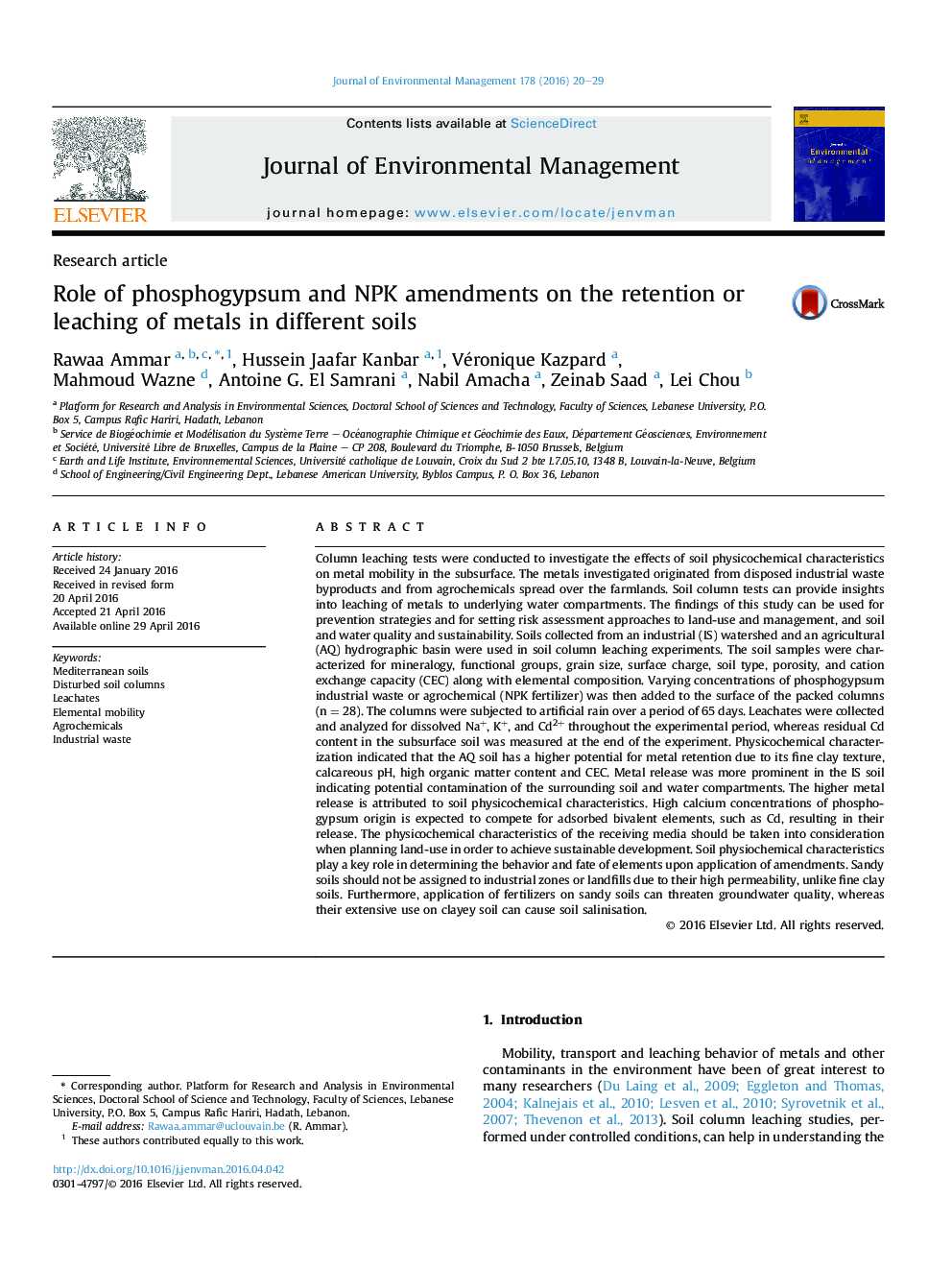| کد مقاله | کد نشریه | سال انتشار | مقاله انگلیسی | نسخه تمام متن |
|---|---|---|---|---|
| 1055357 | 1485234 | 2016 | 10 صفحه PDF | دانلود رایگان |
• Phosphogypsum promotes metal leaching in a concentration dependent manner.
• NPK fertilizers can increase metal retention capacity in clayey soils.
• Phosphogypsum can be used as an amendment on clayey soils to decrease salinity.
• Fate of metals in soil is greatly dependent on amendment nature and soil type.
• Soil physiochemical characteristics must be considered in soil management plans.
Column leaching tests were conducted to investigate the effects of soil physicochemical characteristics on metal mobility in the subsurface. The metals investigated originated from disposed industrial waste byproducts and from agrochemicals spread over the farmlands. Soil column tests can provide insights into leaching of metals to underlying water compartments. The findings of this study can be used for prevention strategies and for setting risk assessment approaches to land-use and management, and soil and water quality and sustainability. Soils collected from an industrial (IS) watershed and an agricultural (AQ) hydrographic basin were used in soil column leaching experiments. The soil samples were characterized for mineralogy, functional groups, grain size, surface charge, soil type, porosity, and cation exchange capacity (CEC) along with elemental composition. Varying concentrations of phosphogypsum industrial waste or agrochemical (NPK fertilizer) was then added to the surface of the packed columns (n = 28). The columns were subjected to artificial rain over a period of 65 days. Leachates were collected and analyzed for dissolved Na+, K+, and Cd2+ throughout the experimental period, whereas residual Cd content in the subsurface soil was measured at the end of the experiment. Physicochemical characterization indicated that the AQ soil has a higher potential for metal retention due to its fine clay texture, calcareous pH, high organic matter content and CEC. Metal release was more prominent in the IS soil indicating potential contamination of the surrounding soil and water compartments. The higher metal release is attributed to soil physicochemical characteristics. High calcium concentrations of phosphogypsum origin is expected to compete for adsorbed bivalent elements, such as Cd, resulting in their release. The physicochemical characteristics of the receiving media should be taken into consideration when planning land-use in order to achieve sustainable development. Soil physiochemical characteristics play a key role in determining the behavior and fate of elements upon application of amendments. Sandy soils should not be assigned to industrial zones or landfills due to their high permeability, unlike fine clay soils. Furthermore, application of fertilizers on sandy soils can threaten groundwater quality, whereas their extensive use on clayey soil can cause soil salinisation.
Figure optionsDownload as PowerPoint slide
Journal: Journal of Environmental Management - Volume 178, 1 August 2016, Pages 20–29
